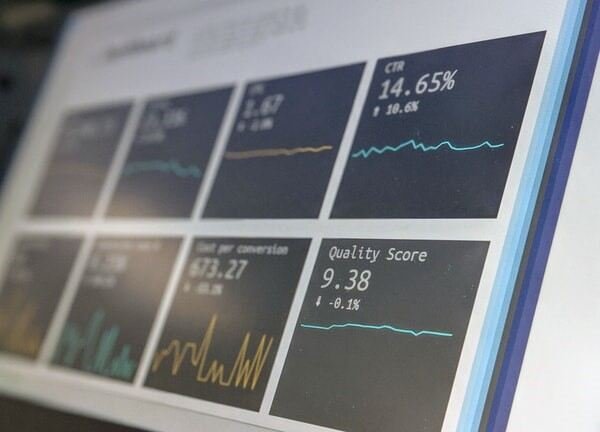Physical Address
304 North Cardinal St.
Dorchester Center, MA 02124
Physical Address
304 North Cardinal St.
Dorchester Center, MA 02124

The effects of data quality on business performance have been expressly discussed in this article including other important tips.
Data quality is a term used to describe the condition of data. It is often measured by how well the data meets the needs of its intended purpose. Poor data quality can have a negative impact on business performance. It can lead to inaccurate decision-making, wasted resources, and a loss of customers. Keep reading to learn more about the effects of data quality on business performance.

Data quality is the accuracy, completeness, and timeliness of data. It is a critical factor in making sound business decisions. Accuracy is how close the data is to reality. Completeness is how much of the data is included in the set. Timeliness is how up-to-date the data is. Relevance is how important the data is to business operations. Data quality starts with the data collection process, and the data must also be accessible to the users who need it. Data quality metrics are a way of measuring the quality of data. These metrics can help businesses to understand how well their data is being used and what improvements can be made.

There are many signs that data may be of poor quality. Some of the most common include data that is inconsistent, invalid, out-of-date, duplicated, and incorrect. Inconsistent data happens when data is entered inconsistently into different systems or when it is updated manually without following a consistent process. For example, a customer’s name might be spelt differently in different systems, or the same customer’s age might be entered as both 27 and 28.
Invalid data is caused by incorrect input or by data that has been corrupted in some way. For example, a product’s price might be entered as $1,000,000.3.Out-of-date data is caused by data that has not been updated regularly or by data that has been archived and is no longer accurate. For example, a customer’s contact information might be accurate as of last month but not accurate anymore.
Duplicate data is caused by data that has been copied and pasted multiple times or by data that has been entered more than once. For example, a customer’s name might be entered into the system twice, with two different addresses. Lastly, incorrect data is caused by data that has been entered inaccurately or by data that has been translated incorrectly. For example, a customer’s name might be entered as “John” when it is spelt “Johnathan.”
Also Read: Top 10 Business Doctoral Programs online
There are many ways to improve data quality. The first step is to identify the sources of poor data. This can be done by reviewing data entry errors, checking for duplicate records, and identifying incorrect or incomplete information. Once the source of the problem has been identified, steps can be taken to correct it. One way to improve data quality is by using validations rules.
Validation rules are sets of instructions that help ensure that the data entered into a system meets certain criteria. For example, a validation rule might require that an employee’s name be entered in exactly the same format every time it is used in the system.
Another common validation rule is a range check, which ensures that numbers are within a certain range or that dates fall within a specific date range. Another way to improve data quality is through standardization processes. This involves ensuring that all data follows predefined formats and rules so that it can be easily understood and processed by computers.
Standardizing data makes it easier to compare different sets of information and helps reduce inaccuracies caused by human error. A third way to improve data quality is through cleansing processes. This involves identifying and correcting incorrect or incomplete information in existing analytical datasets. Cleansing processes can involve anything from simple manual checks to more complex algorithms that identify patterns in the data. It’s important to keep track of the progress made in improving data quality, so you can determine whether further action is needed.
There are many industries that rely on good data quality in order to function properly. These industries include healthcare, financial institutions, and retailers. The healthcare industry is one that is constantly evolving, and with that comes the need for accurate data. Patient data is vital in order to provide the correct treatment and care for patients. If the data is not accurate, it can lead to incorrect treatments and even death. There are a few different types of data that are important in the healthcare industry.
The first is demographic data, which includes information such as a patient’s name, address, and contact information. It is important to have this data in order to keep track of patients and their medical history. The second type of data is clinical data, which includes information on a patient’s diagnosis, treatment, and prognosis. It is important to have this data in order to make sure that patients are getting the best possible care.
Financial institutions are complex organizations with many moving parts. A single bad decision can have far-reaching consequences. This is especially true when it comes to the accuracy of customer data. Financial institutions rely on good data quality to make sound decisions about where to allocate their resources. If customer data is not accurate, it can lead to incorrect financial decisions and even bankruptcies. This is why it is so important for financial institutions to have good data governance in place.
It is no secret that retailers are reliant on good data quality. Inaccurate customer data can lead to all sorts of problems, including lost sales and decreased profits. One of the main ways that retailers can ensure good data quality is by using a customer data management (CDM) solution. A CDM solution can help to cleanse, merge, and update customer data, making it more accurate and reliable. Another way to ensure data quality is to audit your customer data regularly. This means checking to make sure that the data is accurate and up-to-date and correcting any errors that may exist.
Also Read: 5 Best HR Software for Small Businesses
The effects of data quality on business performance cannot be over-emphasised, and this all boils down to how your data quality meets the intended purpose.
And we have shown how many industries need data quality to function properly. And you need to identify the sources of poor data if you are to improve data quality as we have discussed in this article.
Do well to read this article as many times as possible if you need more information.